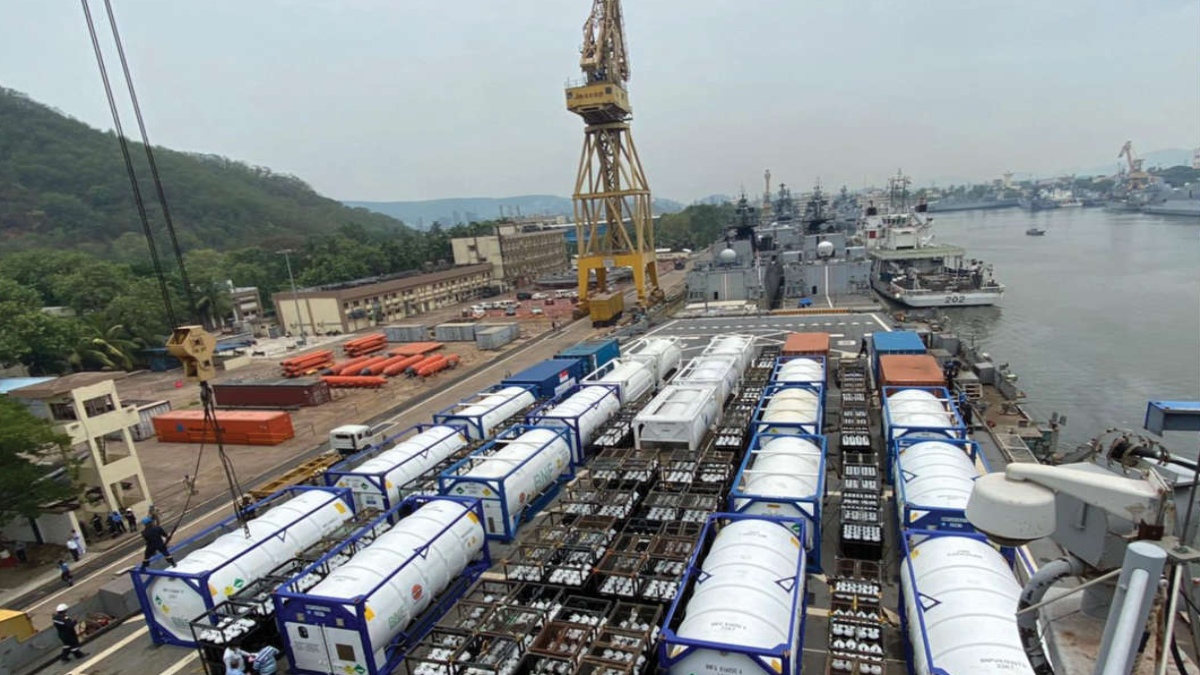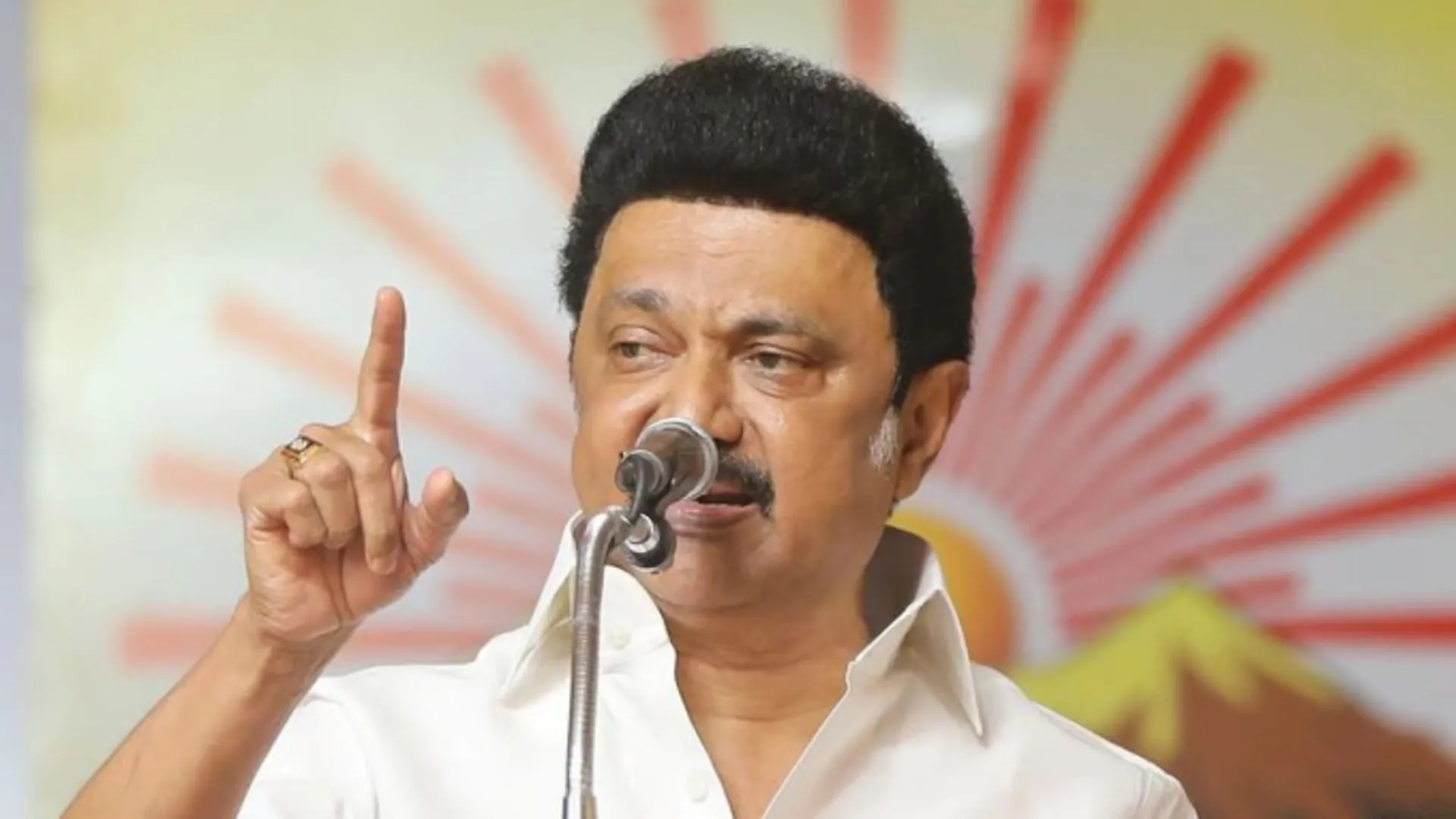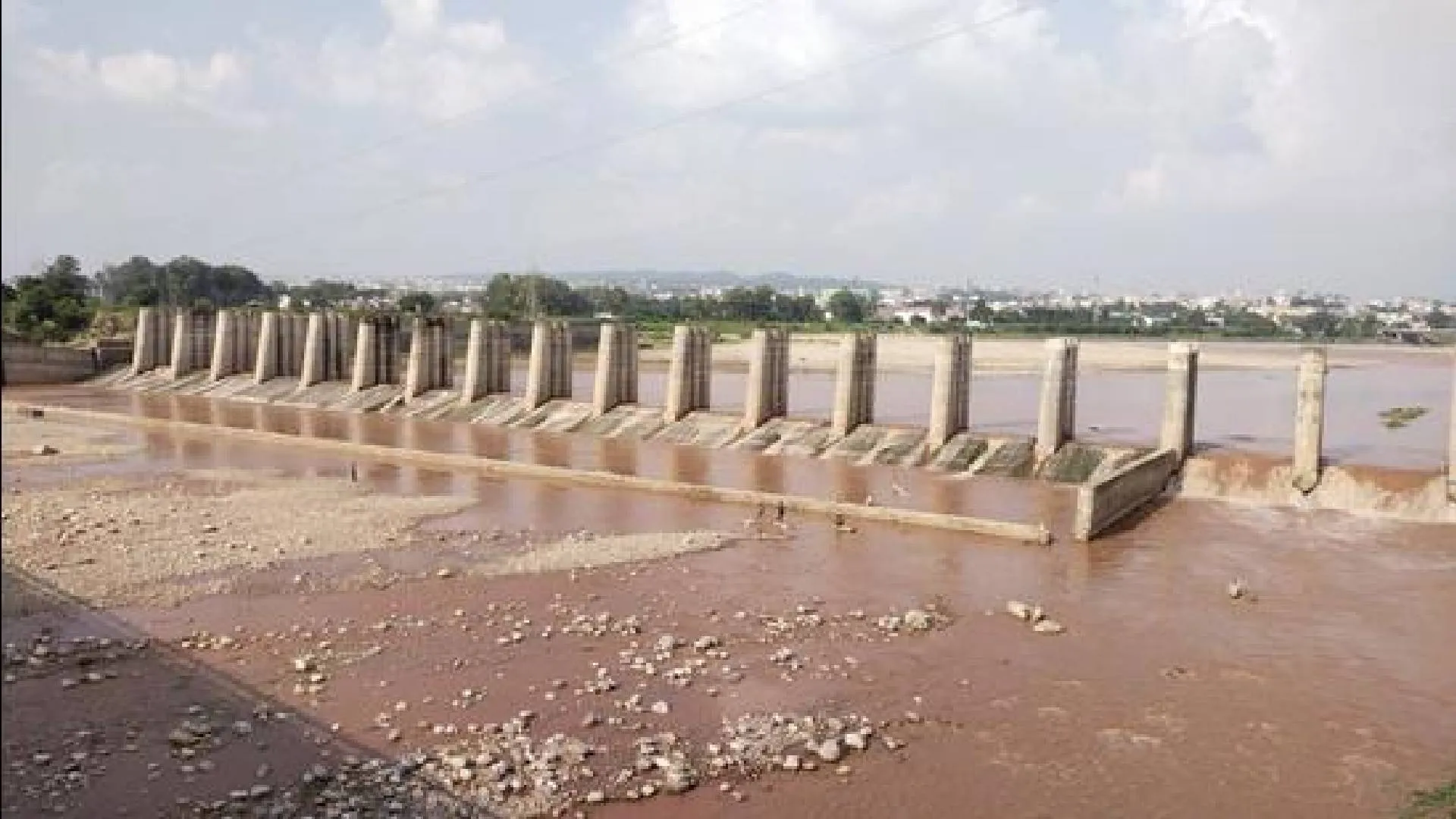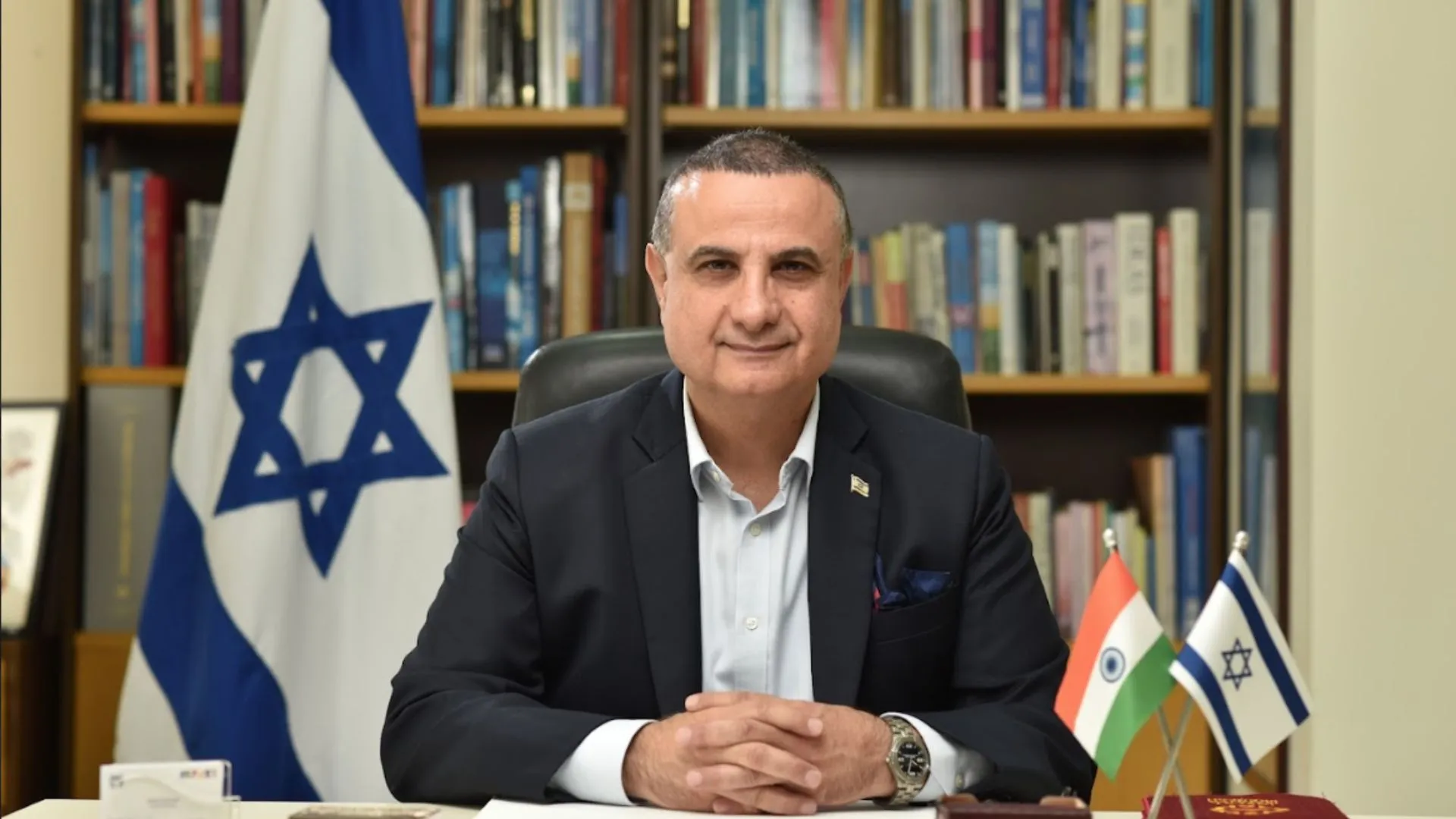On this day seventy years ago, 27 May 1951, the Indian Navy (IN) was presented with the President’s Colour. There was a historical context to this. On 26 January 1950, when India became a Republic, the prefix ‘Royal’ was dropped from the Indian Navy and the King’s Colour awarded previously to all three services and their component units were laid up in the Indian Military Academy at Dehra Dun. However, resultantly, the Sovereign’s Colour that is displayed on ceremonial occasions and parades to build troop morale was no longer available. Thus, the Government of India decided to present the Colour to the Indian Navy, the first amongst the three services to be so honoured, in keeping with the British tradition of the Navy being the Senior Service. Then Lt (later Vice Admiral) M.P. Awati received the Colour on behalf of the Indian Navy, from President Rajendra Prasad, in a grand ceremony, at the Brabourne Stadium, in Mumbai.
 Naval dockyarad team working on the oxygen plant at Nellore
Naval dockyarad team working on the oxygen plant at Nellore INS Jalashwa entering Vishakapatnam loaded with oxygen and other supplies
INS Jalashwa entering Vishakapatnam loaded with oxygen and other supplies Unloading of oxygen tanks from INS Airavat at Visakahapatnam
Unloading of oxygen tanks from INS Airavat at Visakahapatnam Daring rescue mission by Seaking helicopter during Cyclone Tauktae
Daring rescue mission by Seaking helicopter during Cyclone Tauktae INS Kolkota sick bay giving first aid to rescued personnel of Cyclone Tauktae
INS Kolkota sick bay giving first aid to rescued personnel of Cyclone Tauktae Heartfelt gratitude to the navy: Sentiments of those rescued to crew of INS Kochi
Heartfelt gratitude to the navy: Sentiments of those rescued to crew of INS Kochi Oxygen recycling system developed by Diving School, Kochi
Oxygen recycling system developed by Diving School, Kochi Oxygen loading on INS Trikand
Oxygen loading on INS Trikand INS Jalashwa returns to Vizag with cryogenic tanks and oxygen cylinders embarked.
INS Jalashwa returns to Vizag with cryogenic tanks and oxygen cylinders embarked. Naval ships on oxygen mission.
Naval ships on oxygen mission.
 \
\
Presentation of President’s Colour to Indian Navy 27 May 1951.
Since then, the other two Services and many subordinate formations have been presented the President’s Colour in recognition of their service to the nation. These are treasured by the units and displayed at appropriate locations to instill pride and engender unit cohesion. Thus, today, seventy years later, is a good time to evaluate the growth of the Navy and its contributions across a range of national activities, especially as it has been virtually co-terminus with the growth of our Republic. The Armed Forces are, but naturally, expected to deliver on the defence and security front and the Indian Navy has done so handsomely over the last seven decades. As the nation’s principal instrument in the maritime domain, the Navy has also contributed in the spheres of constabulary and maintaining good order at sea. Further, because of the essentially multilateral nature of oceans, the Navy has also been the lead agency in our defence diplomacy missions.
Over and above this, one area where the Navy has been quietly doing a lot and built considerable expertise is in the field of Humanitarian Assistance and Disaster Relief (HADR). Over the years, our ability to respond with alacrity to a range of HADR requirements within the country and in the wider Indian Ocean Region (IOR) has earned us many equities. While the inherent flexible nature of Navies enables this multi-tasking, the excellent training and humanware in our service make for successful outcomes in such enterprises.
Here, it needs emphasis that rendering HADR is an enshrined tradition within the Navy. Right from Independence, under different names such as ‘aid to civil authority’ or ‘rescue missions’ in times of accidents, or ‘restoration of services’ or ‘diving assistance’ in rivers and dams, the Navy has played a significant hand in varied HADR missions. However, the tsunami of 2004, wherein the Indian Navy earned global acclaim for its prompt response and assistance in the region, also taught us many lessons. The Navy, thereafter, built up institutionalised mechanisms which were undergirded by doctrinal frameworks in its approach to HADR. It recognised that between the desire to help and actual delivery of assistance there is a whole world of ‘capacities and capabilities’ which it has assiduously tried to build over the subsequent years. This attribute has manifested itself in the Navy’s significant, if somewhat understated, role in fighting the Covid-19 pandemic even while maintaining our combat worthiness given the fragile security situation in the neighbourhood.
COMBATING THE FIRST WAVE
The Covid-19 pandemic brought to fore unprecedented challenges for the entire nation including the Services. The challenges to the Navy were at multiple levels. At the base it was about keeping the service and community safe from the pandemic; however, since the Navy’s entire structure of warfighting and daily functioning depends upon teamwork and camaraderie, which, in turn, is contingent upon physical togetherness and close proximity in a ship, submarine, air station or other units, there were tremendous conceptual challenges as well. Tactile gestures are integral to the Armed Forces—playing games together, a shabaash, a handshake, a shoulder over the arm of a shipmate, a hug, engender bonhomie and team spirit. To move away from those paradigms needed mental and emotional adjustment. And, all of this, at a time when the Navy had to remain in constant state of alertness in view of the volatile border situation, the Galwan incident and other related issues. Simultaneously, considering its resources and organisational strengths, the Navy also hoisted the signal that it had to be at the forefront of fighting the pandemic, assist the national cause wholeheartedly and remain fully committed to contribute in all possible ways.
In the first wave of Covid the Indian Navy launched Operation ‘Samudra Setu’ (Sea Bridge) for the repatriation of our stranded citizens. In this operation, lasting over 55 days, IN Ships Jalashwa, Airavat, Shardul and Magar traversed more than 23,000 km by sea and brought back nearly 4000 citizens. The operation was a herculean task. Given the need for physical distancing, the ships had to create specially demarcated areas for quarantine, clinic and the passengers’ stationing area. Ensuring crew separation from passengers, availability of women staff for female passengers, provision of lodging, boarding, recreation, medical assistance while ensuring strict protocols, cleaning and sanitation of crowded spaces, liaison with host nations, updating documentation, speedy and smooth embarkation and disembarkation, were the many challenges the ships had to cope with and take in stride.
Many countries including the Maldives, Mauritius, Madagascar, Comoros and Seychelles had requested India for assistance in dealing with Covid-19 and India responded with ‘Mission Sagar’ which entailed deploying INS Kesari with 600 tons of food to the Maldives while sending medical personnel and medicines to other countries. A special consignment of Ayurvedic medicines was also sent to Mauritius. The mission was significant in highlighting our friendly relations with these countries during trying times. The Navy also contributed in creating small but significant innovations such as the ‘Portable Multi-feed Oxygen Manifold (MOM)’ that enabled one Oxygen Bottle to supply six patients concurrently, development of low cost handheld IR based temperature sensor for undertaking screening of large number of personnel at entry gates, designing high quality PPE kits for mass production and such like.
Fighting the Second Wave
This year we experienced the second wave of Covid-19 and its mutant; a deadlier version killing thousands. Once again, IN joined the nation’s effort to curb the transmission and help those in need. In April this year, when the extraordinary surge of the pandemic put tremendous pressure on the country’s health infrastructure, the Indian Navy launched Operation ‘Samudra Setu 2’ to augment the national mission for meeting medical oxygen requirements. Nine Indian Navy warships from all three Naval Commands were extensively deployed for shipment of Liquid Medical Oxygen (LMO) and associated medical equipment from friendly foreign countries across the expanse of the Indian Ocean Region.
The first such consignment of two 27 Metric Tonnes (MT) Liquid Oxygen containers was brought in by INS Talwar from Bahrain to New Mangalore on 05 May whilst the next batch comprising IN ships Kolkata, Kochi, Tabar and Trikand arrived on 10 May at Mangalore/Mumbai, carrying nine 27 ton Oxygen containers, over 1,800 oxygen cylinders and other medical stores from Qatar and Kuwait. Meanwhile, on the eastern seaboard, INS Airavat arrived at Visakhapatnam on 10 May carrying eight cryogenic containers with a capacity of 20 tons each, 3,650 oxygen cylinders, 10,000 Rapid Antigen Test kits and other vital medical supplies from Singapore.
India’s only Landing Platform Dock (LPD) INS Jalashwa, pulled out of maintenance and pressed for national duty, arrived in India on 23 May, bringing the largest consignment—300 MT—of LMO to India in addition to 3,600 Oxygen cylinders, ventilators and empty cryogenic containers from Brunei and Singapore. This was followed by INS Shardul bringing in 210 MT LMO and 1,200 Oxygen cylinders on 25 May and INS Airavat departing from Vietnam the same day. As of today, Indian Naval ships have delivered 910 MT of LMO, more than 12,000 Oxygen Cylinders, and a large number of Covid relief material/medical supplies from Bahrain, Kuwait, Qatar, Brunei and Singapore to various Indian ports. That this is high priority work for the Navy is evident from the fact that more such turnaround missions are planned in the ensuing days.
The Navy has also contributed in the welfare and care of people in our distant island territories by deploying ships and aircraft to transfer essential medical supplies like oxygen cylinders, Rapid Antigen Detection test kits, PPE, masks and other items to Lakshadweep & Minicoy (L&M) Islands and Andaman and Nicobar (A&N) Islands. This operation continues till date as part of ‘Oxygen Express’ for delivery of Covid essentials and to undertake urgent movement of critical patients to/from these islands.
Elsewhere, experts from Naval Dockyard, Visakhapatnam, achieved a major breakthrough in repairing two large Oxygen Plants at Nellore and Shri Kalahasthi (near Tirupati) enabling a big boost to the Oxygen Supply in Andhra Pradesh. These plants had been non-functional for a long time—six years in case of the Nellore plant—and naval teams worked around the clock in ensuring that the output was of medical grade oxygen standard. Adding another feather to the cap, the Diving School, at Kochi, designed an ‘Oxygen Recycling System’ (ORS) to remedy the ongoing oxygen shortage situation. The ORS is designed to extend the life of the existing medical Oxygen cylinders by up to four times. The overall cost of the prototype has been capped at Rs. 10,000 enabling considerable savings due to the recycling effort. This breakthrough will substantially enhance the existing Oxygen capacity in the country and can also be used to extend the cylinder life.
Indian Navy is also reaching out to civil administration with Area Commanders maintaining close liaison with Chief Secretaries and District Collectors to provide support for movement of essential medicines and supplies to the Covid affected areas, provision of oxygen to civil hospitals, setting up of community kitchens for the needy and other technical help as may be necessitated. Existing spare capacity of Covid beds are being extended to civil administration at various naval hospitals and oxygen manifolds are being used to expand the number of beds. Till date, 111 ICU beds and 450 non-ICU beds have been earmarked for use by civilian administration in various naval hospitals in Maharashtra, Goa, Karnataka, Kerala, Andhra Pradesh, Orissa and Port Blair.
Further, more than 200 personnel from Indian Navy have been deputed for duties at Covid hospitals established at New Delhi, Patna, Ahmedabad and Kavaratti Island for providing aid to civil population. Additionally, about 200 Battle Field Nursing Assistants (BFNAs) have been trained and kept ready for deployment. 62 BFNAs out of this have been already deployed at Ahmedabad. In addition, 75 Nursing Assistants are being trained per week to augment the support staff. The Navy’s medical fraternity—doctors, nurses, paramedics and ward staff—has been at the forefront braving this difficult situation while also ensuring that the regular, but by no means easy, task of looking after other medical requirements of the armed forces personnel and their families are met.
SWIFT RESPONSE TO CYCLONE TAUKTAE
Even as Indian Navy was involved in a slew of pandemic mitigation measures, the super cyclone Tauktae threatened widespread destruction and danger to lives. The Navy was once more pressed into action and, all along the western seaboard, specialist teams were kept in readiness. As the storm was picking up, the Navy undertook several rescue/relief missions off Mangalore and Kochi. But more was to come as the storm intensified off north Maharashtra. Responding to requests, INS Kochi was swiftly deployed to rescue adrift Barge ‘P305’, with 261 personnel onboard, in the Bombay High area, while INS Kolkata was deployed to render assistance to barge ‘Gal Constructor’, stricken off Mumbai, with 137 people onboard. Indian Navy relentlessly undertook Search and Rescue (SAR) operations which were intensified when Accommodation Barge P-305, unfortunately, sank on 17 May, 35 miles off Mumbai. A tug Varaprada with 13 crew members which had gone to assist Gal Constructor also sank.
From 17 to 25 May, the Indian Navy led one of the biggest SAR operations despite challenging circumstances, torrid seas and extremely unfavourable weather conditions. All 137 personnel on Gal Constructor were rescued. Of the 261 people on P 305 and 13 on Varaprada, 188 survivors were picked up and 86 mortal remains were recovered at sea or along the coast. INS Makar, a survey vessel, located the wrecks of both P 305 and Varaprada. Diving was carried by specialised teams on the wrecks to ascertain no mortal remains were there. By accounting for all personnel, the Navy led SAR mission has either rescued or brought closure to the bereaved families. Here, it also needs emphasis that locating wrecks goes beyond the realm of SAR into Salvage.
This mammoth SAR Operation involved nine IN ships—Kochi, Kolkata, Teg, Talwar, Beas, Betwa, Subhadra, Makar, Tarasa—many small Intermediate Support Vessels (ISVs) and nine naval aircraft—3 P8I maritime surveillance aircraft and 2 each ALH, Seaking and Chetak helicopters. The total area searched in this effort was approximately 10,000 square nautical miles. Handling ships, boats and helicopters in extreme weather posed great challenges but they brought to fore the high levels of professionalism and commitment displayed by all the naval personnel involved.
CONCLUSION
The outbreak of the Covid-19 virus produced many large and unexpected challenges for the world at large and India was no exception. While the government responded by ushering in several measures to meet and mitigate the effects of the pandemic, the Indian Navy has played a significant contributory role. The initiatives taken by the Navy to help the nation fight both the waves are laudable. A series of technical innovations, repatriation missions, setting up hospitals and quarantine facilities, distributing food, and other ventures have provided a measure of relief and respite in the ongoing dire situation. Above all, its gigantic effort in ferrying oxygen from all over the world has, possibly, saved many lives.
A classic illustration of the Navy’s flexibility and versatility is provided by the multi-faceted deployment of the Western Fleet in the past few weeks. Ships of the Fleet took part in Exercise Varuna with the French Navy from 25 to 27 April in the Gulf of Oman, thereafter visited Bahrain, Doha and Kuwait to load LMO and other supplies as also carry out other defence diplomacy missions, returned to India around 10 May to disembark the cargo and were involved from 17 May to 25 May for Tauktae SAR mission. Shortly, they will head back to bring more LMO and medical supplies as well as attend to other operational requirements. The Navy remains combat-ready, mission capable and in full readiness to partake in the national endeavour to fight the pandemic. It has truly responded to the adage of being ‘a Navy that dares and a Navy that cares’.
Cmde Srikant Kesnur, a serving Navy officer, is associated with the Naval History Project (NHP). He is grateful for the research assistance provided by Tiya Chatterji, a research associate at NHP.























